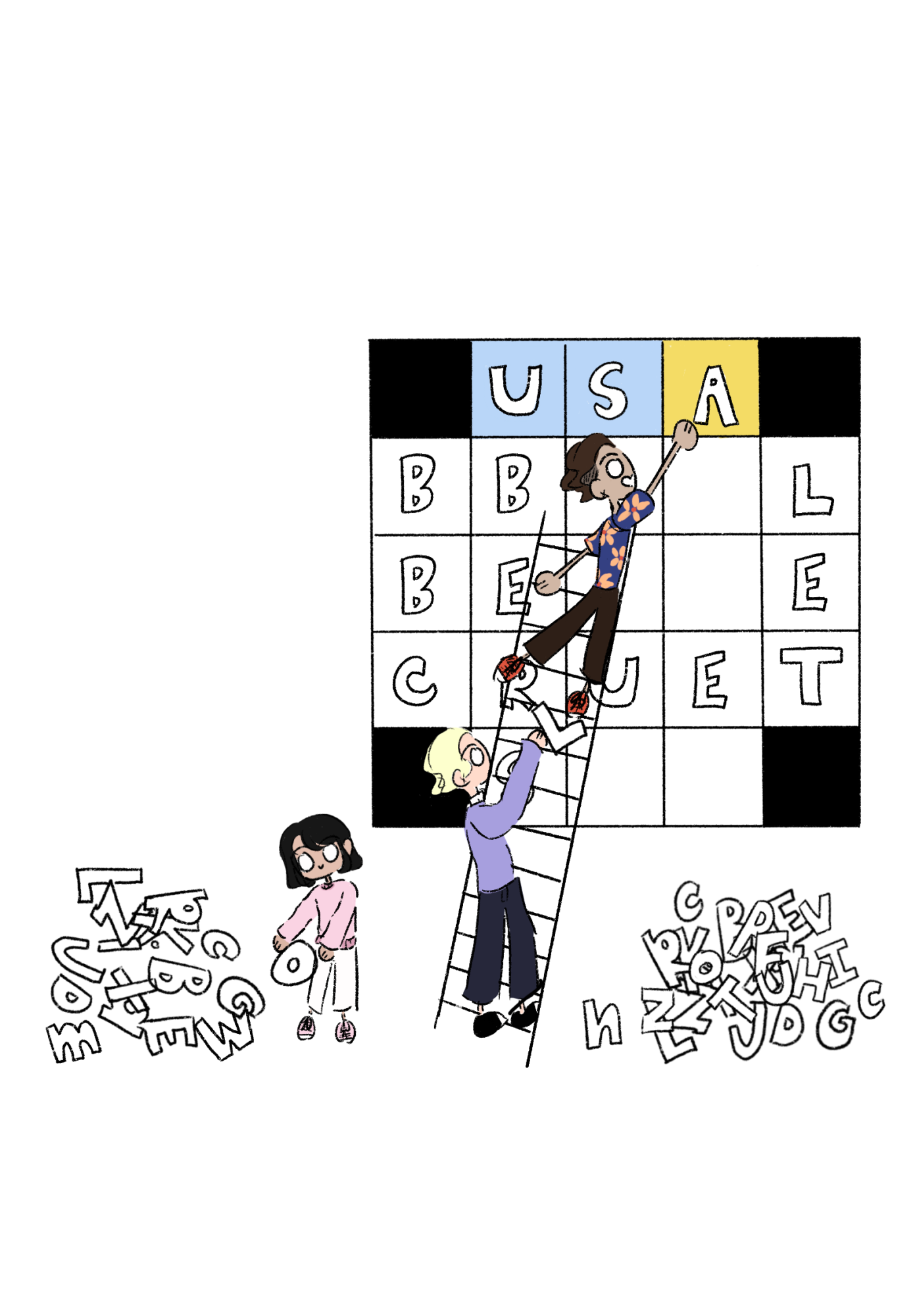My teacher is lecturing at the front of the classroom, her slides projected onto the screen. The rest of the class is quiet. The occasional clack of a keyboard is the only sound that punctuates the silence. Suddenly, the quiet is broken by a bright piano jingle, quickly cut off as someone rushes to mute their computer. Ah, yes, we all know the sound. That merry chime, so often heard in the middle of class, signifies the completion of the New York Times Crossword.
The games on the Times website, including the Crossword, Wordle, Connections, and Mini, have seemingly taken people our age by storm in the past few months. Originally a site for news articles, the Times has become well-known for its plethora of fun yet intellectually stimulating games—some free to play, others requiring a subscription. The games range from fairly simple to refreshingly difficult, and almost everyone I know plays at least one of the games daily: my friends play the Connections every morning, I’ve done the Spelling Bee with my family, and the Mini is a favorite among classmates. At least once per week, I can count on hearing the telltale Crossword jingle in class from some poor soul who forgot to mute their volume.

Even though we probably shouldn’t play games during class, if we’re going to play anything, the New York Times games will rot our brains the least, compared to some of our other options. Instead of Clash of Clans and first-person shooters games, we’re playing word games and solving puzzles. To me, this seemed like a strange phenomenon at first. Most popular games feature some combination of detailed graphics, intense gameplay, and in-depth storylines. Out of all of the games we could become addicted to, why these games?
Deeper thinking is part of their appeal. The Times games are quick, easy ways to get the cogs in your brain turning and flex your mental muscles, whether it be for vocabulary, pattern recognition, or simply recalling trivia. They reset every 24 hours, making them easy to work into your daily routine. Many of the games can be collaborative, allowing families and friend groups to work together to solve a puzzle.
Part of the appeal comes from that instinctual piece of our brains, which likes to win things. The upbeat song for a finished Crossword, the gold star for a Genius-rank Spelling Bee, and the “Perfect” for a carefully considered Connections all hit us with a rush of dopamine and leave us feeling accomplished.
The Times website and Games app have given us access to fun puzzles and, in doing so, have acted as a funnel to the world of journalism that’s just a click away, according to several online sources. The Times has encouraged this even further by bundling the products together under one subscription at a discounted price. By providing easy access to both entertainment and current news, more people are likely to become interested in reading the articles and stories on the website; this benefits both the Times itself, by bringing in interest, and the consumer, by giving them knowledge and information.
So, clearly, there are many reasons to love the New York Times games. Though I’ve only been playing them for a few months, they’ve already become an integral part of my daily life. I know I’ll always owe the Times staff for creating games that have connected the country.





